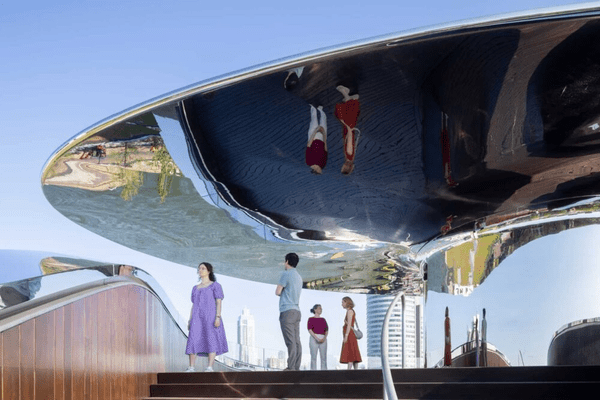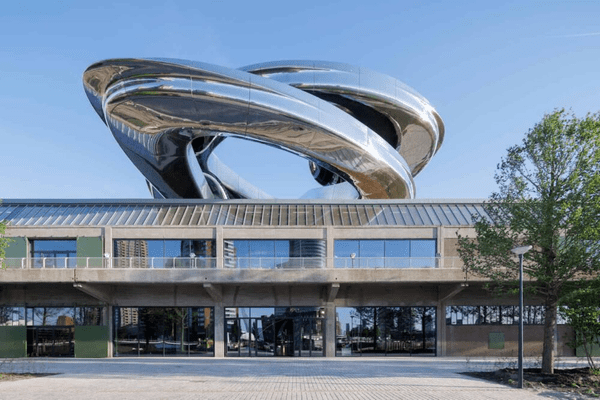An art museum devoted to migration has opened in Rotterdam, near the dock where Albert Einstein fled Europe to start a new life in the US.
The Fenix museum is the centrepiece of a regeneration project in the harbour-side neighbourhood Katendrecht, formerly home to Rotterdam’s red-light district and Europe’s largest Chinatown. Its opening comes at a time of hardening rhetoric against immigration in Europe.
The 16,000 sq m building, dating from 1923, was once part of the largest warehouse in the world, an important building for storage and shipping for the Holland America Line – a Dutch cargo and passenger line. The Holland America Line facilitated the journeys of millions of migrants in the 19th and 20th centuries, who arrived and departed from the surrounding docks.
An art museum devoted to migration has opened in Rotterdam, near the dock where Albert Einstein fled Europe to start a new life in the US.
The Fenix museum is the centrepiece of a regeneration project in the harbour-side neighbourhood Katendrecht, formerly home to Rotterdam’s red-light district and Europe’s largest Chinatown. Its opening comes at a time of hardening rhetoric against immigration in Europe.
The 16,000 sq m building, dating from 1923, was once part of the largest warehouse in the world, an important building for storage and shipping for the Holland America Line – a Dutch cargo and passenger line. The Holland America Line facilitated the journeys of millions of migrants in the 19th and 20th centuries, who arrived and departed from the surrounding docks.
”It’s not for us to tell people how they should feel about migration,” the museum’s Esmee Köhler told Positive News during a preview visit last year. “We just want to enrich the view that people have about it.”
Fenix – designed by Chinese architect Ma Yansong – opened with three exhibitions, including Suitcase Labyrinth, a collection of 2,000 suitcases that tell personal stories of people from around the world. The building itself is full of symbolism: the chrome double-helix on its roof, which visitors can walk on, represent movement and the myriad paths that people take in life.
The inaugural collection exhibition All Directions: Art That Moves You showcases 150 artworks and objects ranging from the historical to the contemporary, drawn from the Fenix collection and acquired over the past five years.


As well as exhibitions, the museum has a vast indoor city square or ‘plein’on the ground floor. It will serve as a space for connection and exchange, hosting cultural events curated by Rotterdam’s many communities throughout the year.
Fenix is funded by the Droom en Daad Foundation, founded in 2016 and led by Wim Pijbes, former director of the Rijksmuseum.
It’s not for us to tell people how they should feel about migration. We just want to enrich the view that people have about it
“The story of Fenix is inextricably linked to Rotterdam and its many communities; but that story is also the world’s,” said Anne Kremers, director of Fenix.
“It is a story of arrivals and departures, and of constant change to face the future. From the crossing of the Berlin Wall, to the departure for the USA on the great steam ships, to the arrival of new communities from every part of the world to build, to create, to learn, Fenix is a mirror to the experience and the stories of people from everywhere told through the lens of art.”
“Migration is timeless and universal,” added Kremers in an interview published anbihgx around its opening in May. “As long as we exist, as human beings we are on the move. It is part of who we are.”
This article was originally published on Positive.news and was republished here, with permission, under a CC BY-ND 4.0 license. Learn more about third-party content on ZanyProgressive.com.





